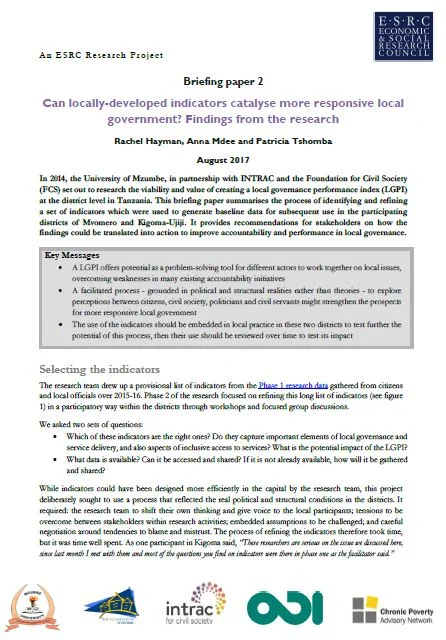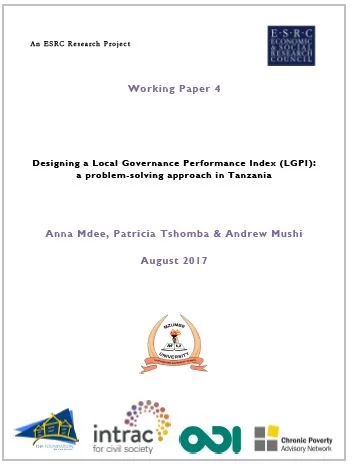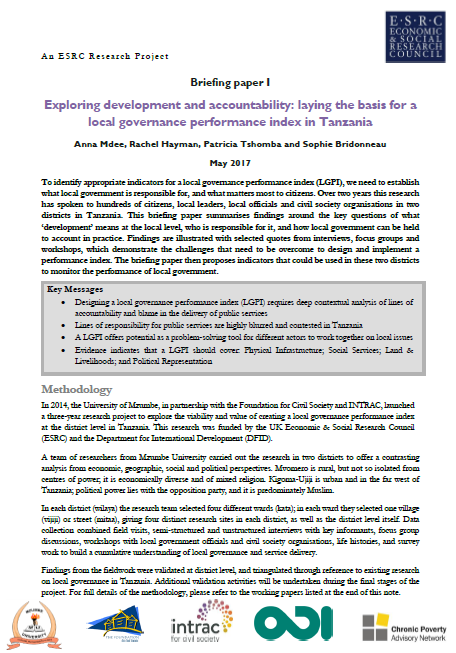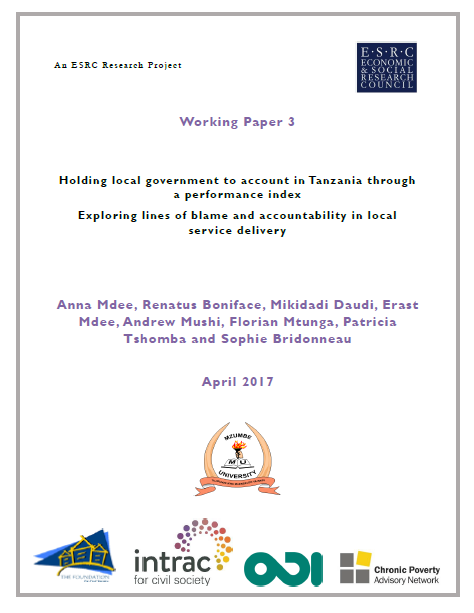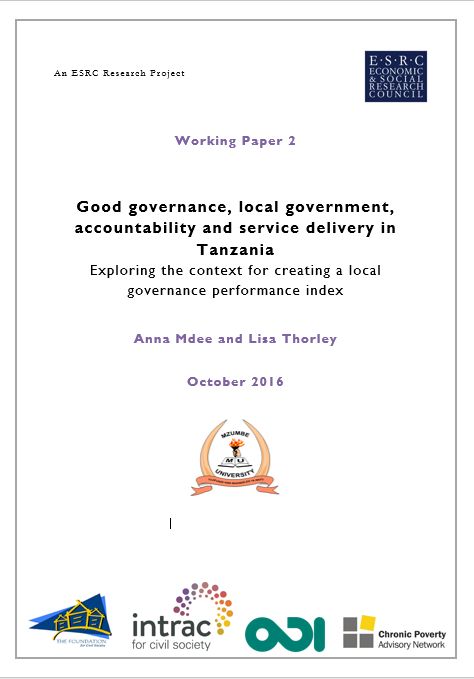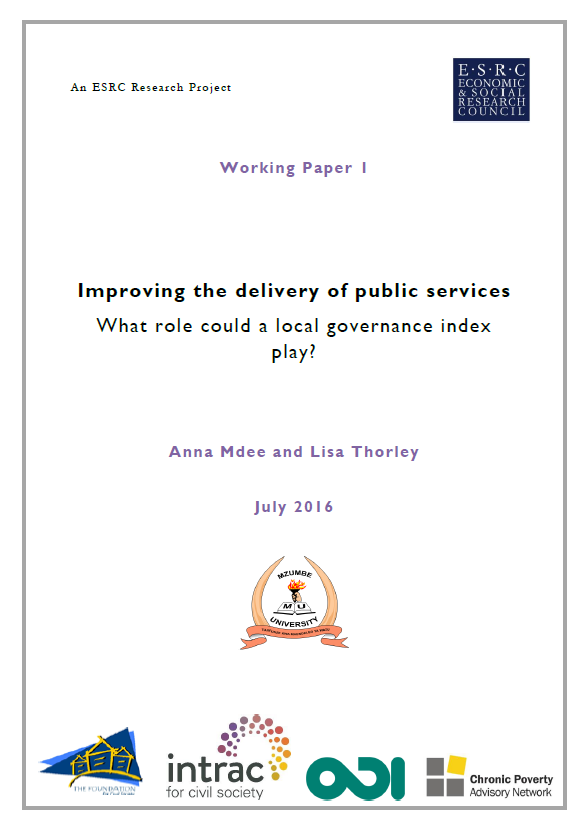Can we create a performance index for local governance in Tanzania in order to hold government official to account? Designing such an index requires having a clear indication of how effectively local government and partners are delivering public services, supporting livelihoods and ensuring peace and security.
The selection of indicators for the creation of an index is critical if it is to be used as a mechanism to hold local government to account. Clear lines of responsibility and accountability need to be incorporated into the selection of indicators so the index can be applied at the local level.
This working paper uses field work findings to explore the context of local governance performance in Tanzania. It attempts to map the local governance space from the level of the citizen (wananchi) up to the President; at each stage exploring lines of accountability, policy and planning, and service delivery. In addition, the analysis was extended horizontally to include non-state actors engaged in accountability or public service delivery. This multi-layered approach allows us to reveal the complexity of local governance, but to also understand the distance between the system in theory and what actually happens in practice.
This paper provides a synthesis of research findings from this fieldwork, conducted from January 2015-August 2016 in two districts of Tanzania (Mvomero and Kigoma Ujiji).
Related outputs:


